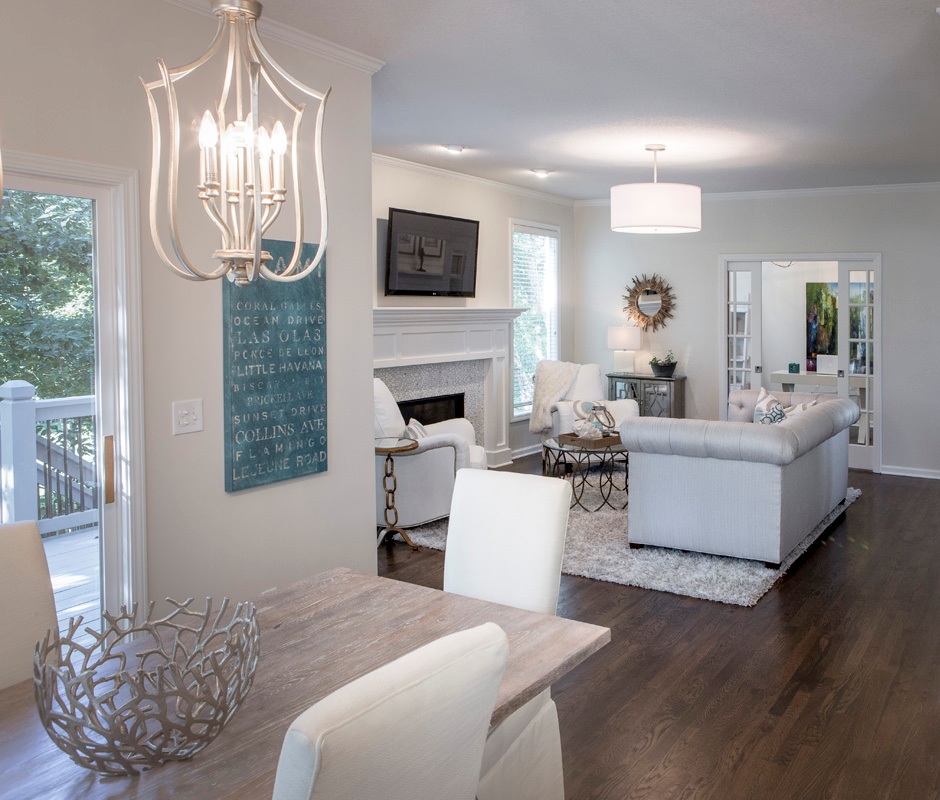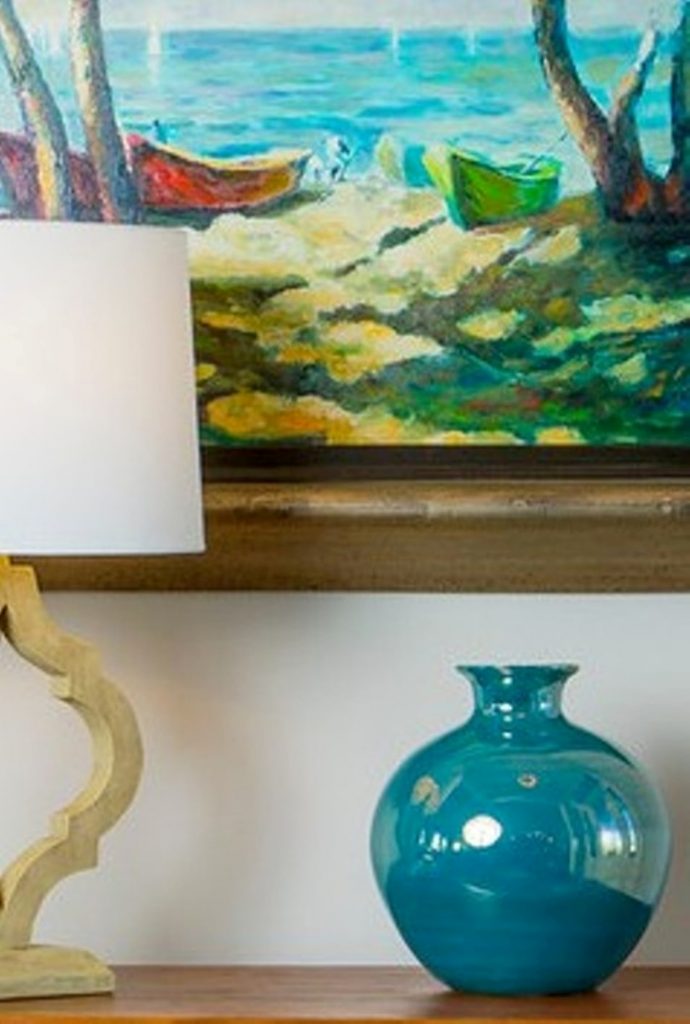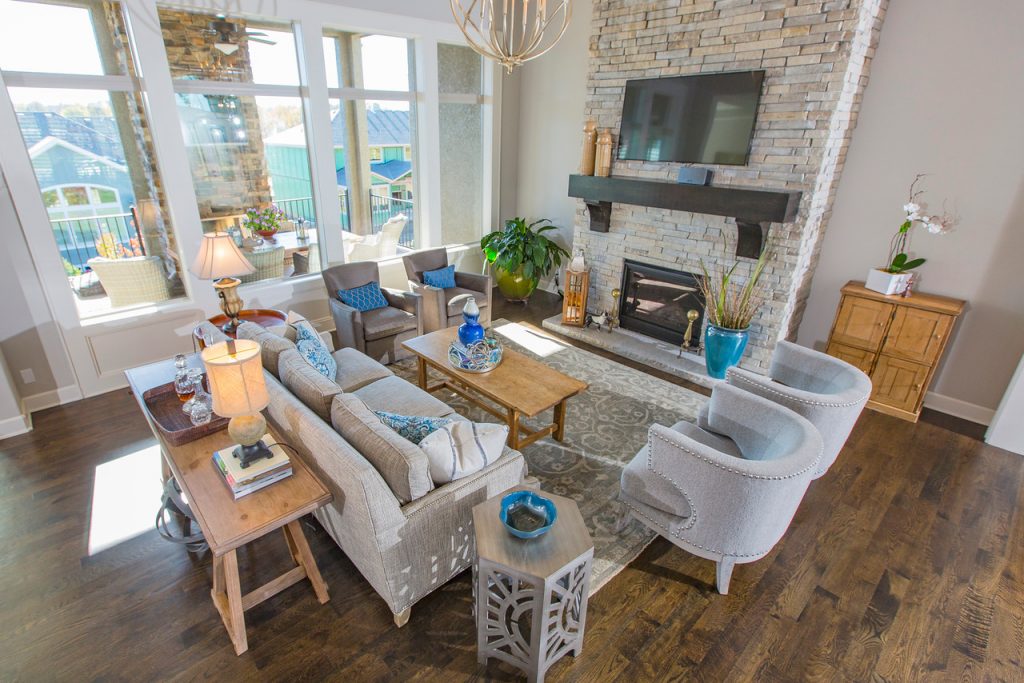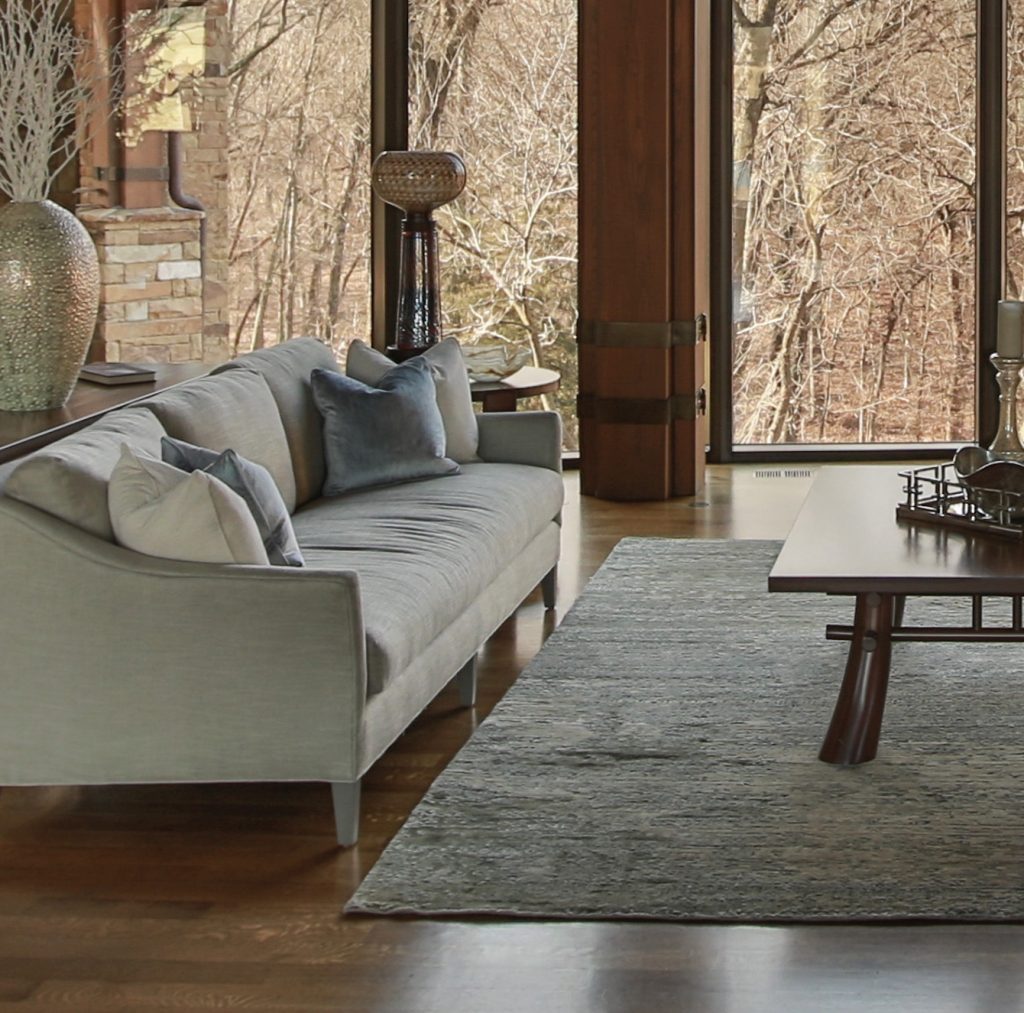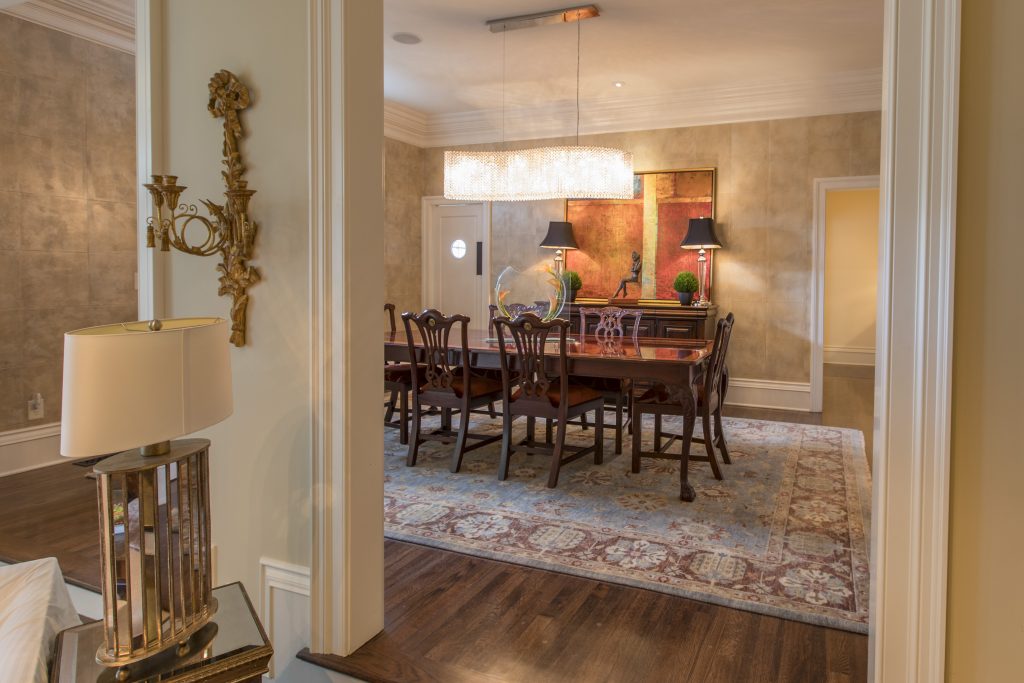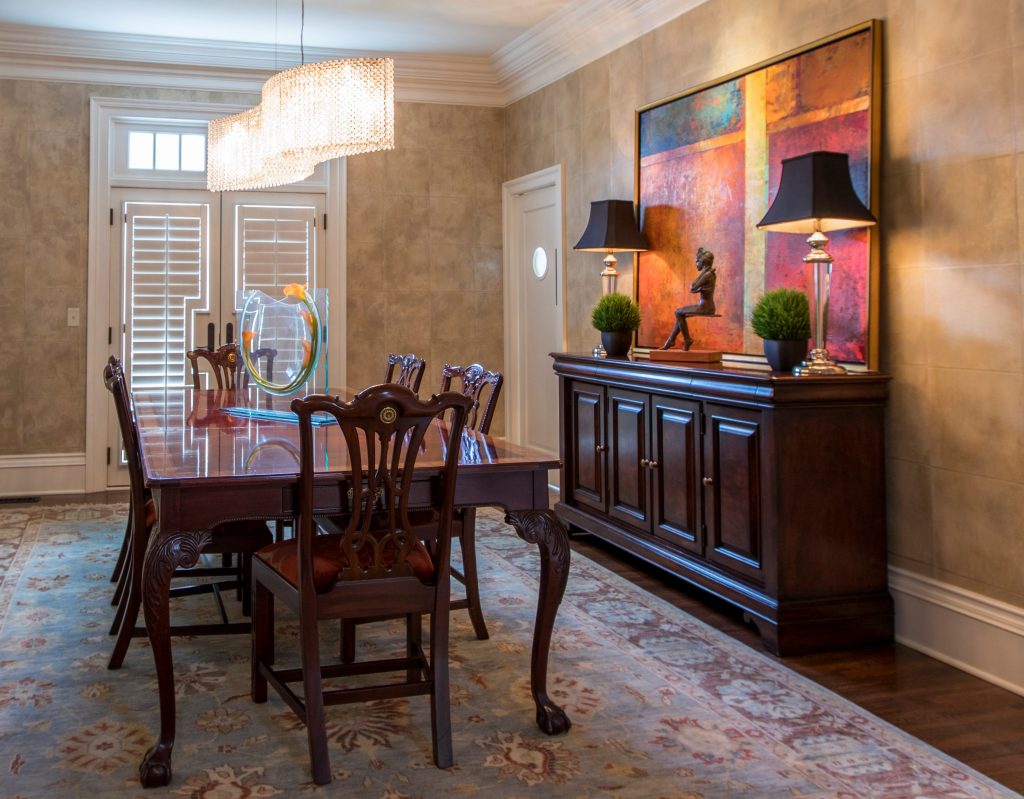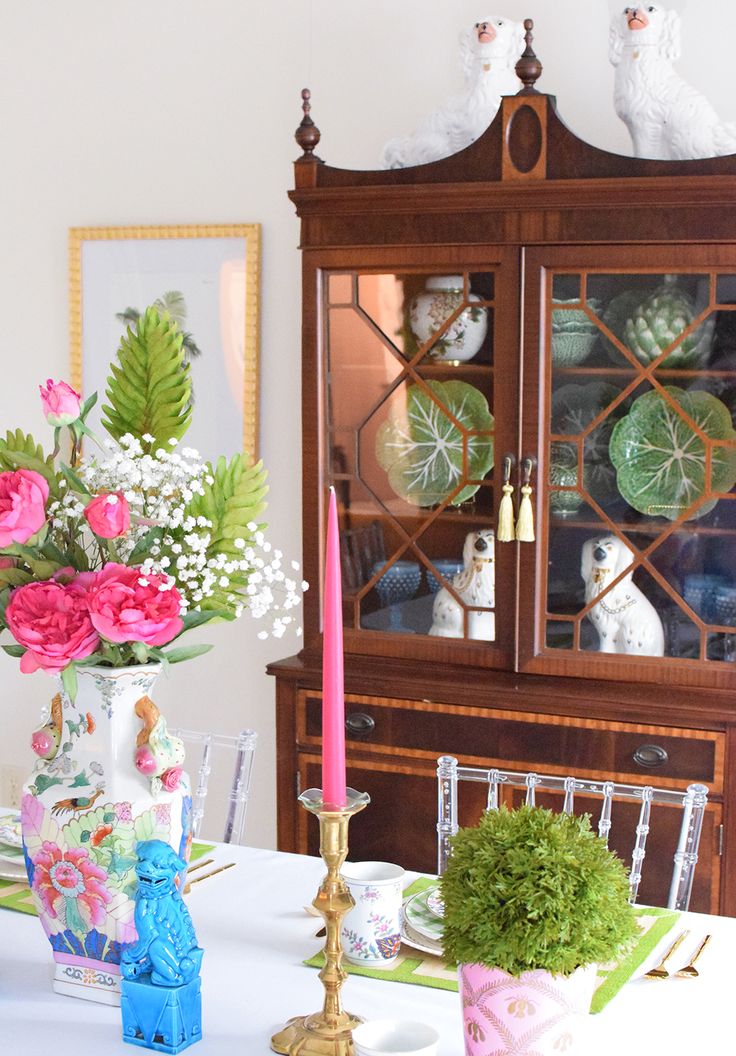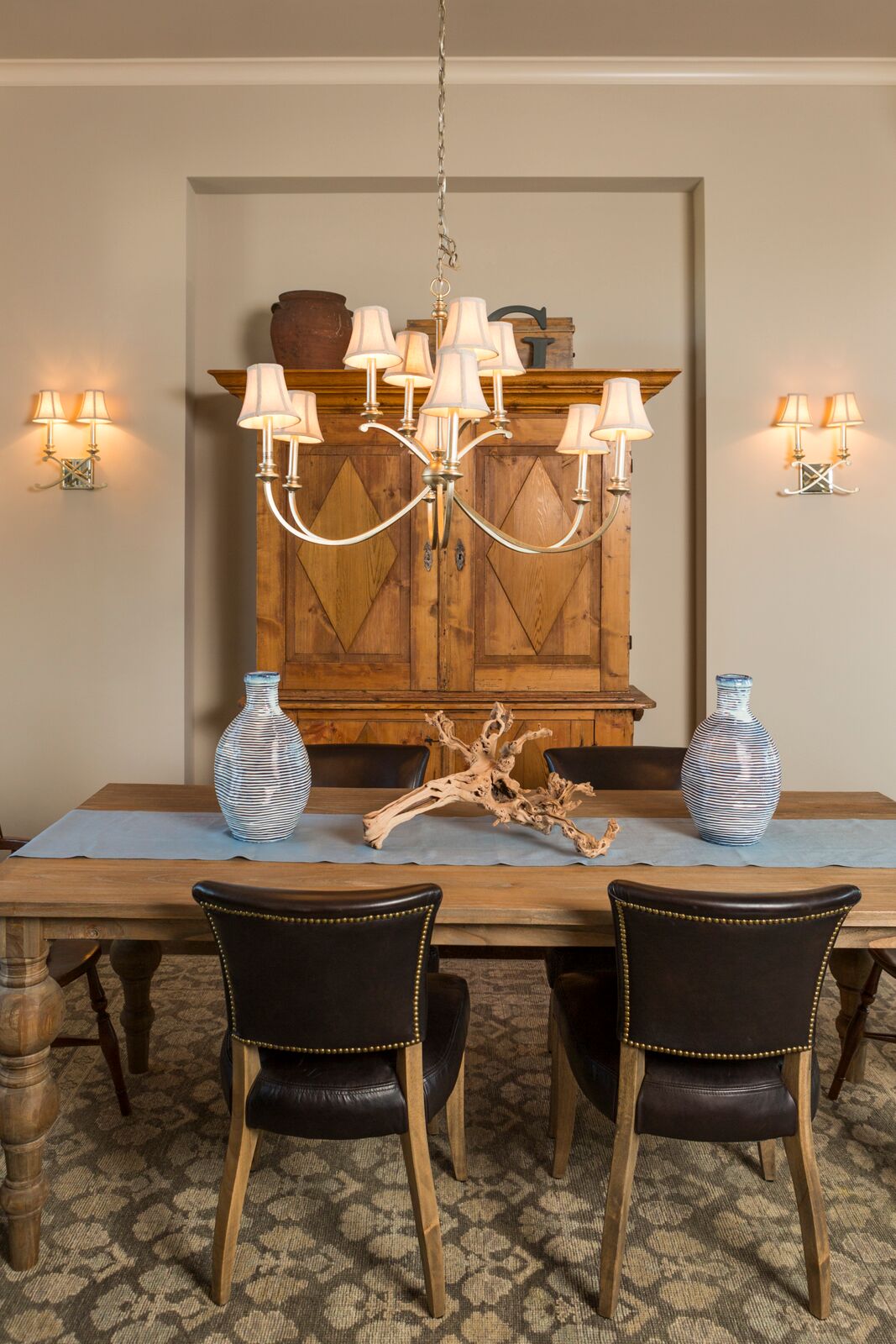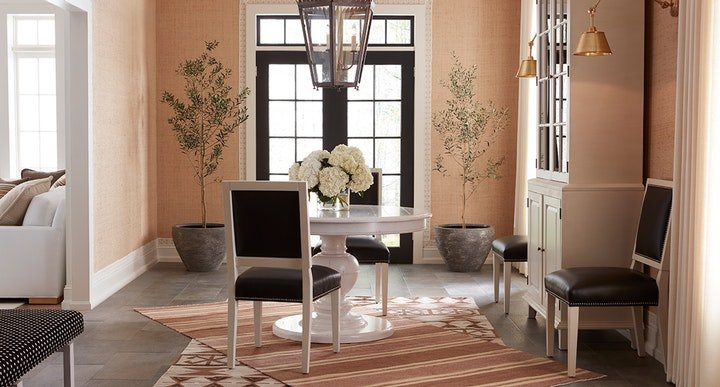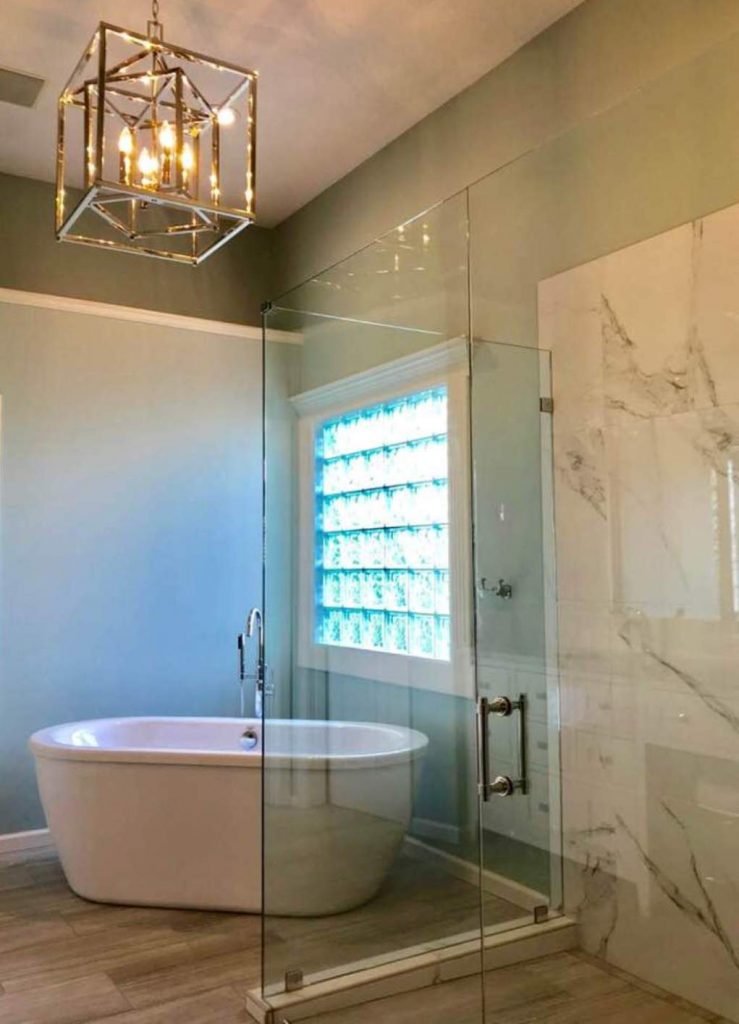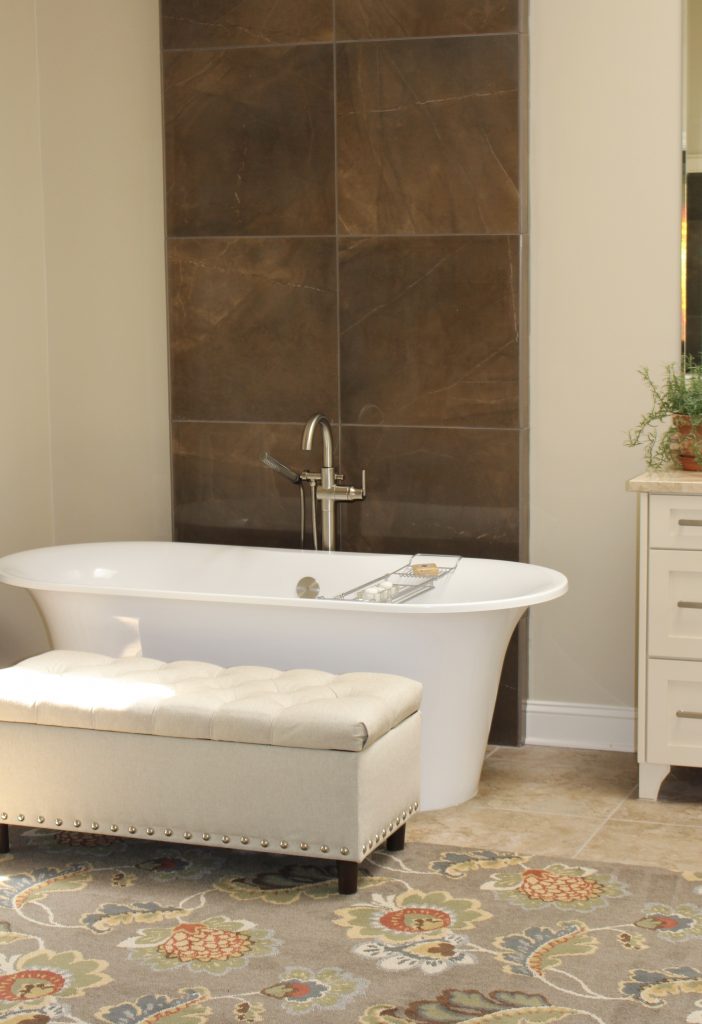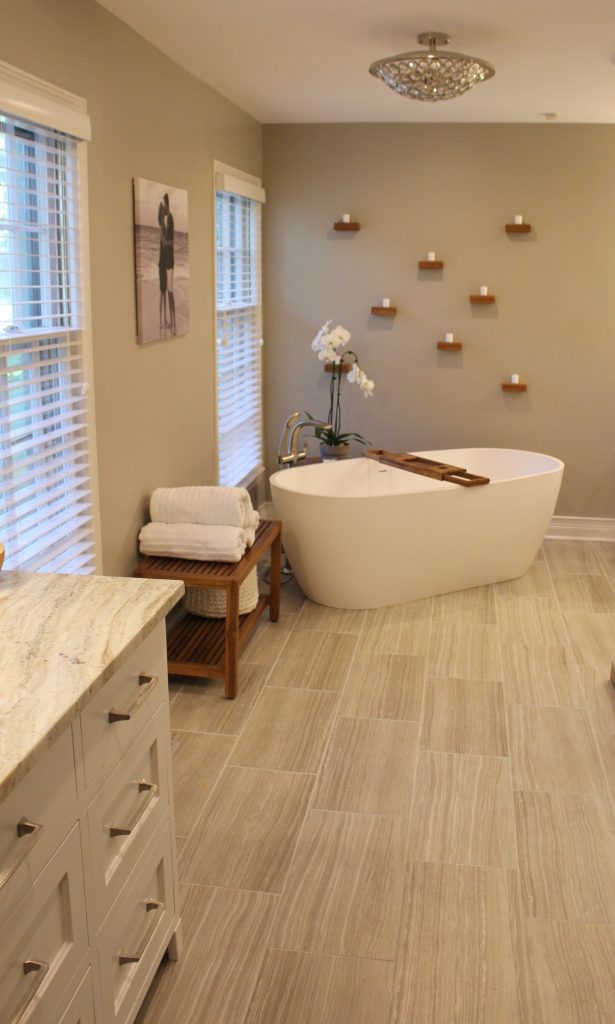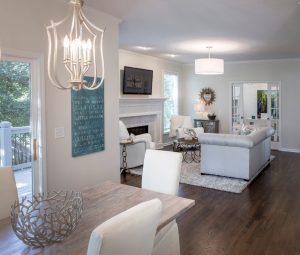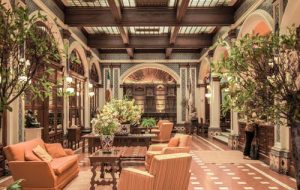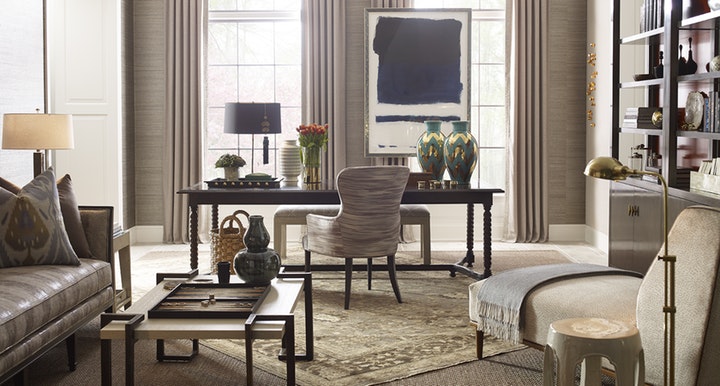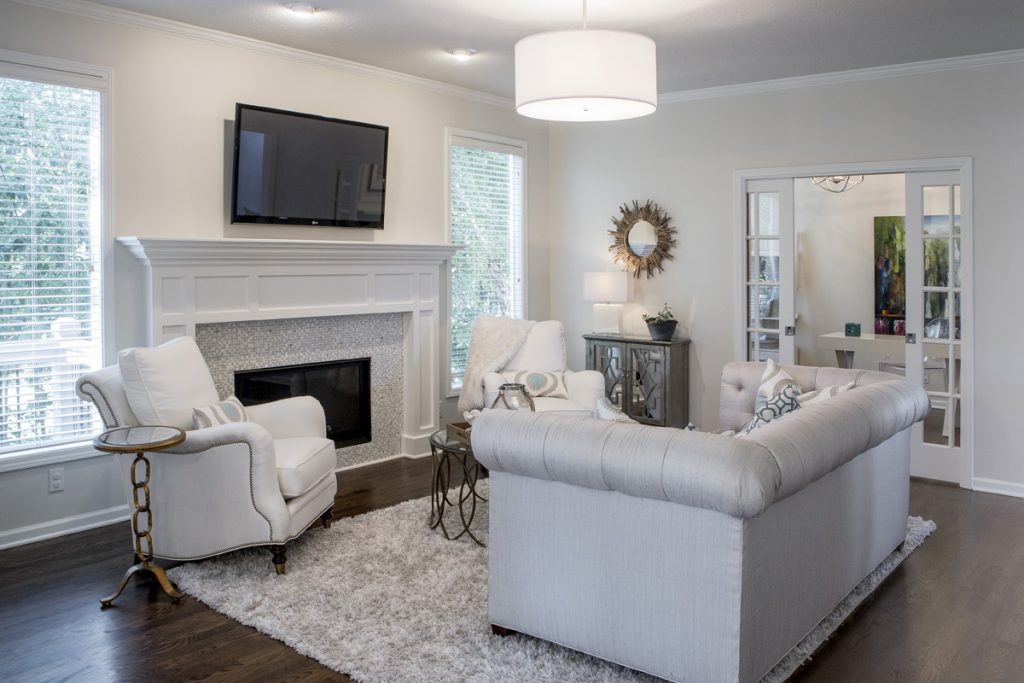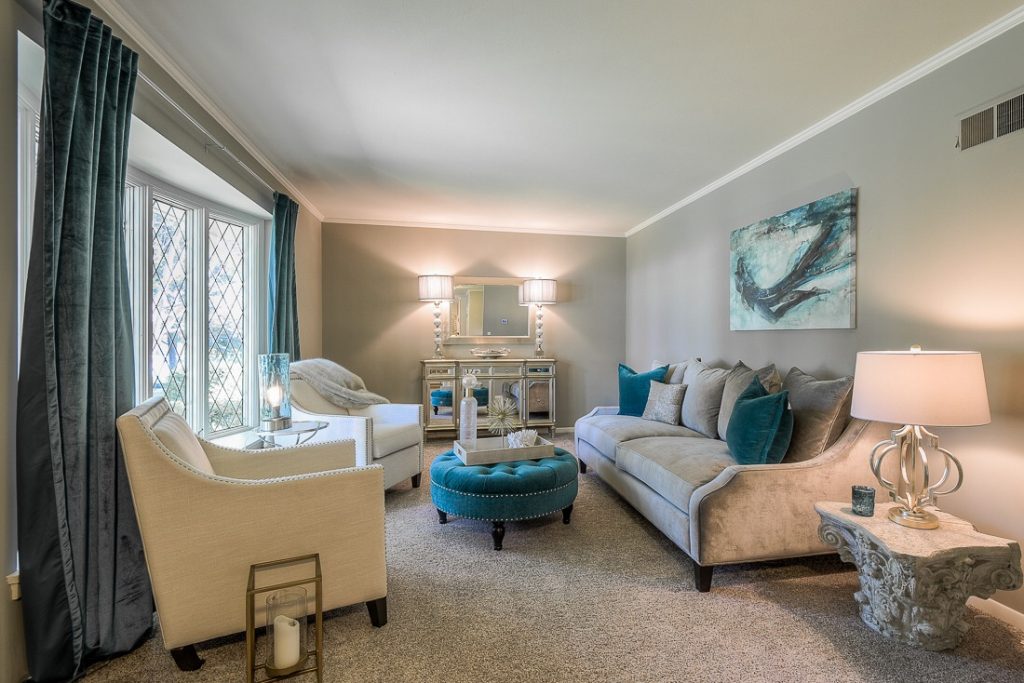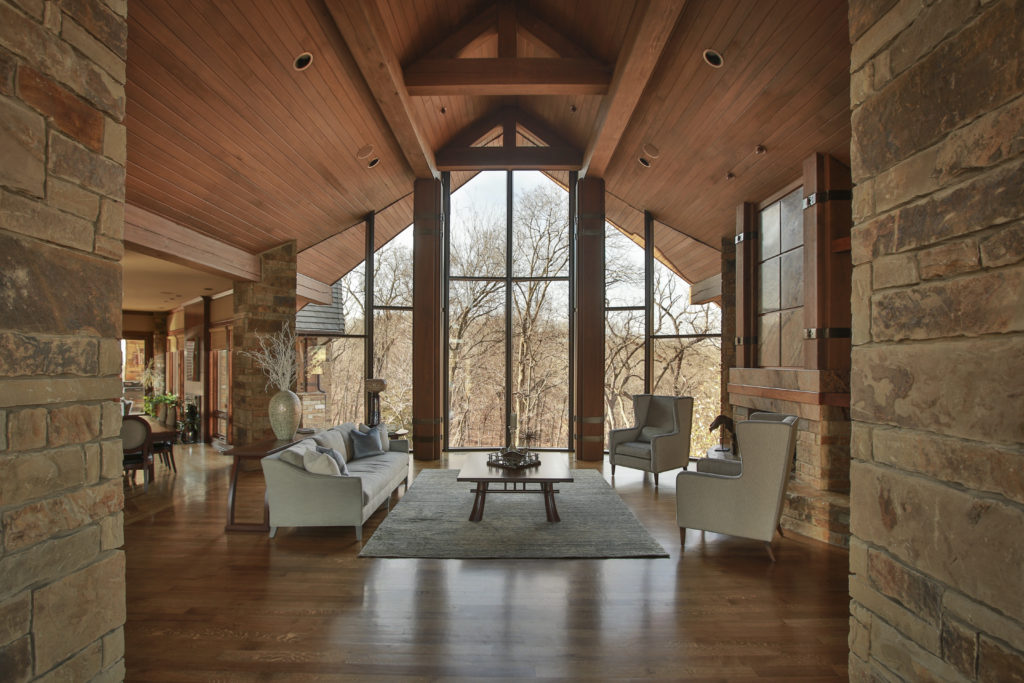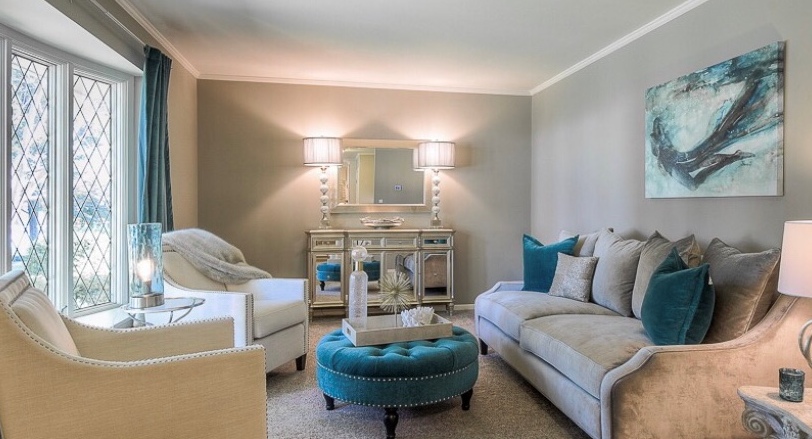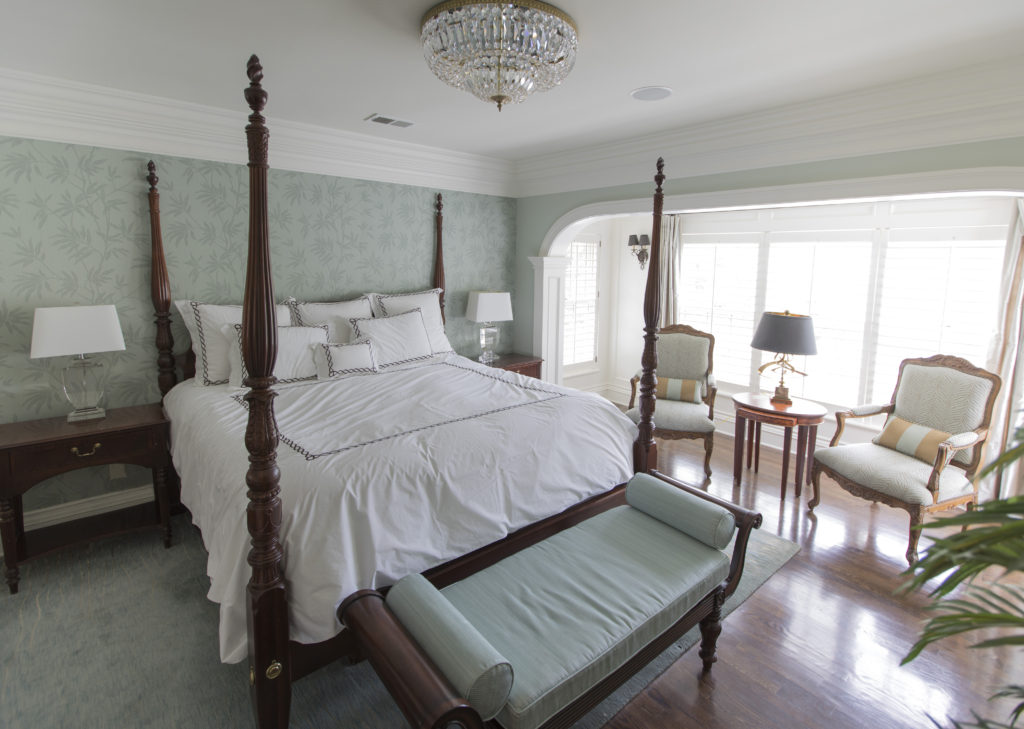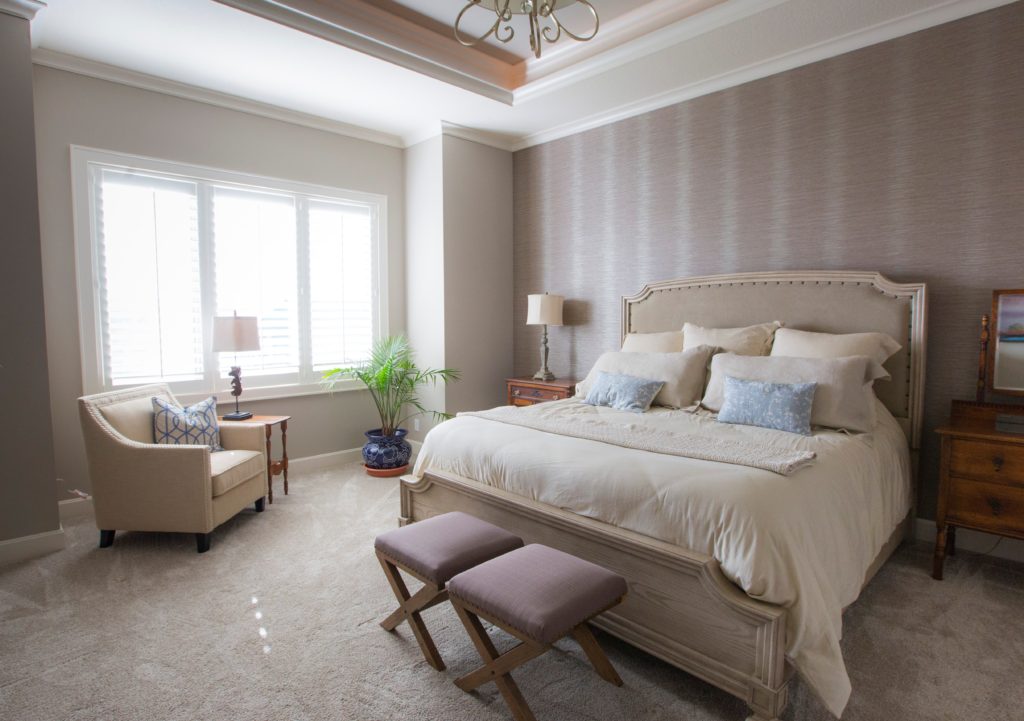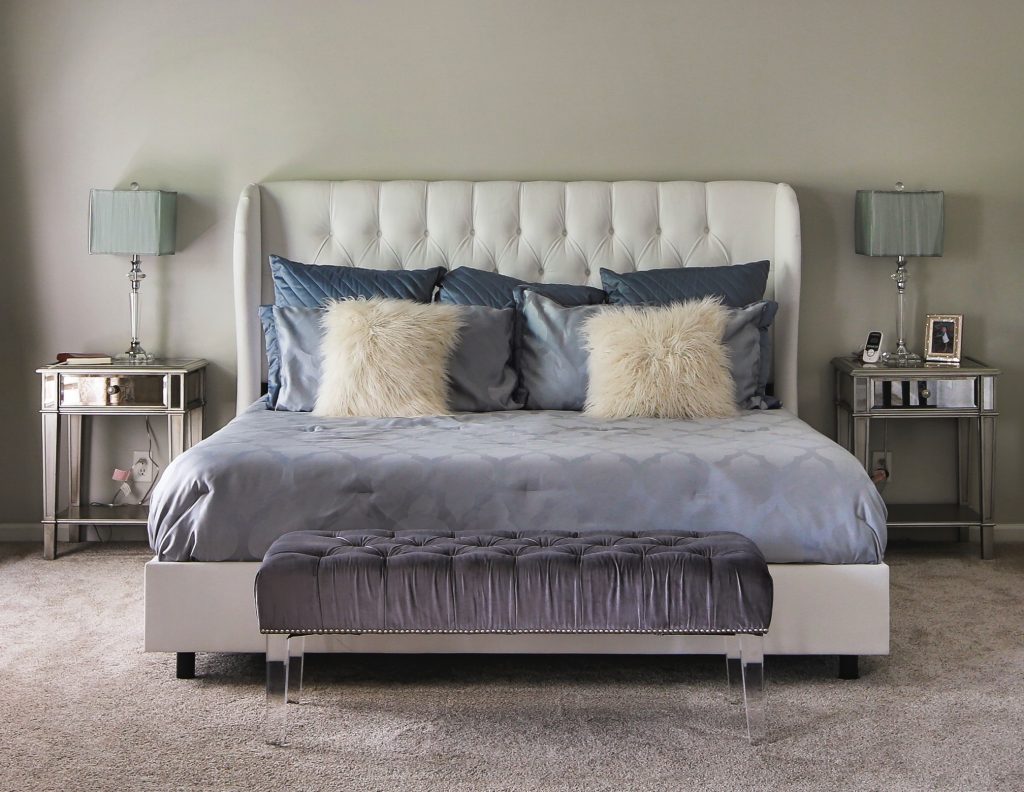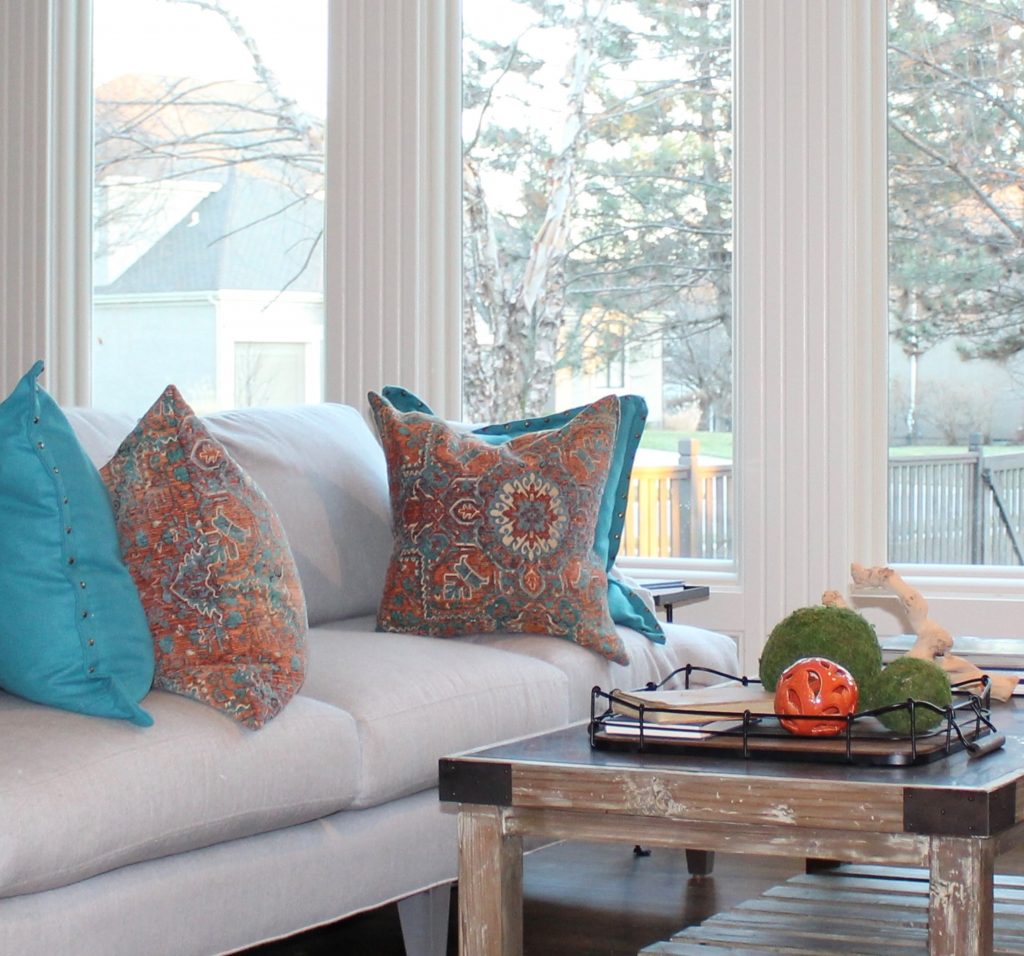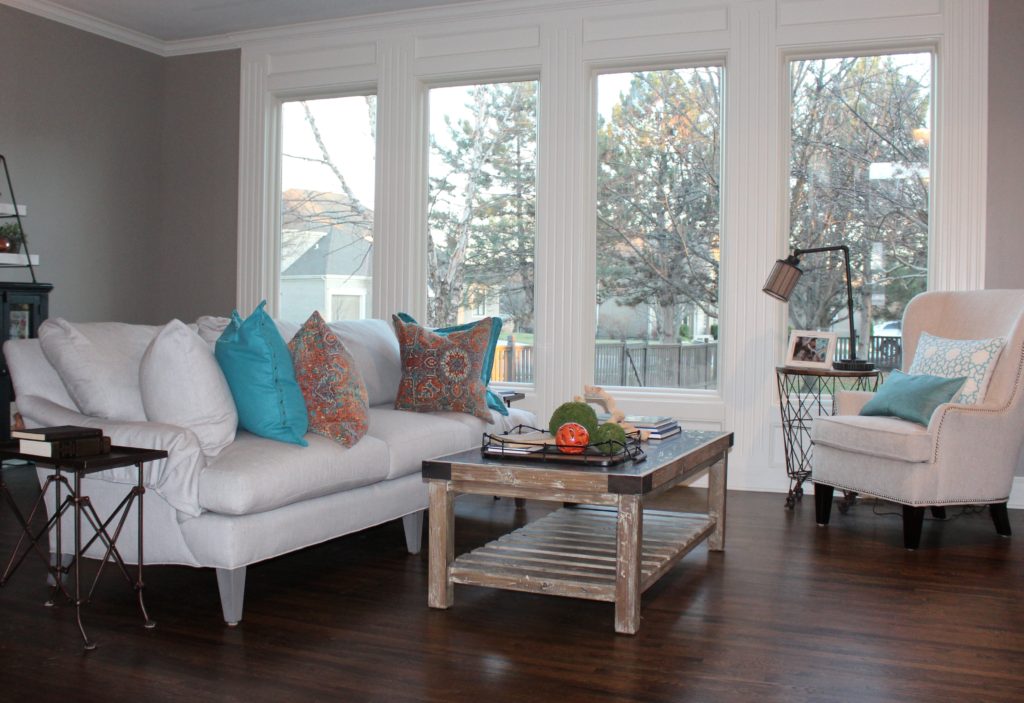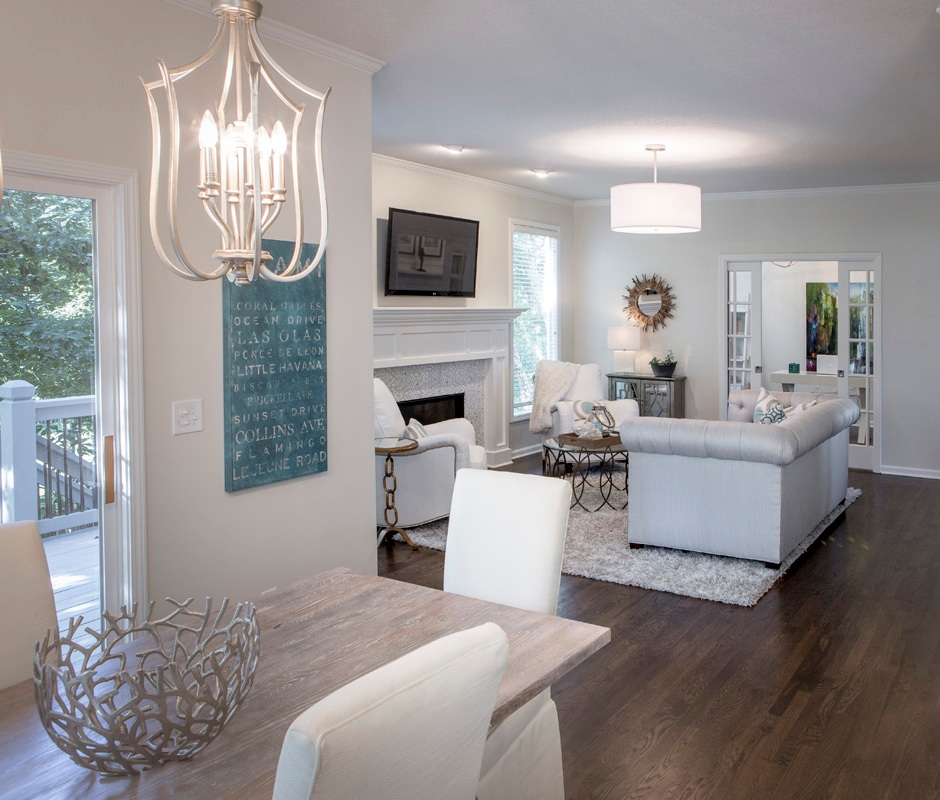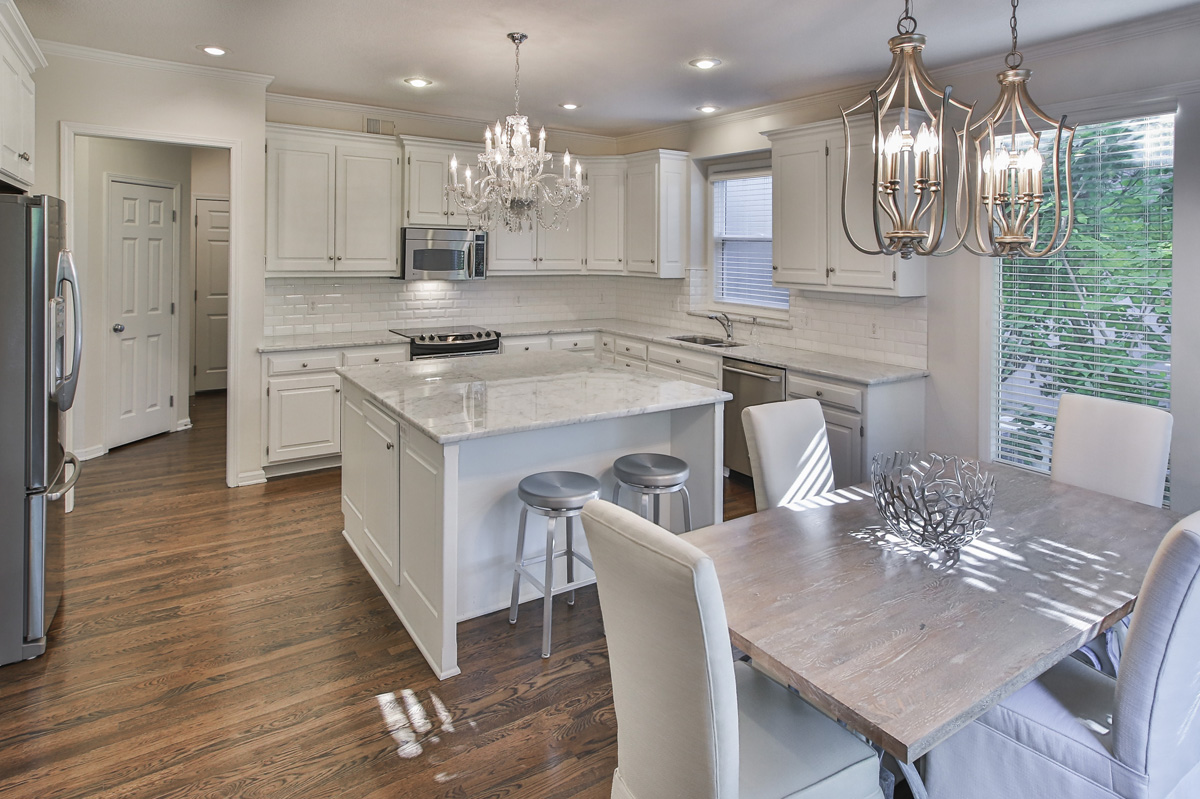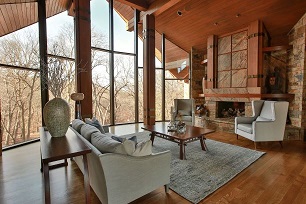 Interior Design/Interior Decorating
Interior Design/Interior Decorating
Interior Decorating: 3 Tips for Creating a Cohesive Look…
Do you have a collection of upholstered furniture pieces that feel unfinished or undone? Read on for my 3 interior designer tips for creating a finished feel in your room.
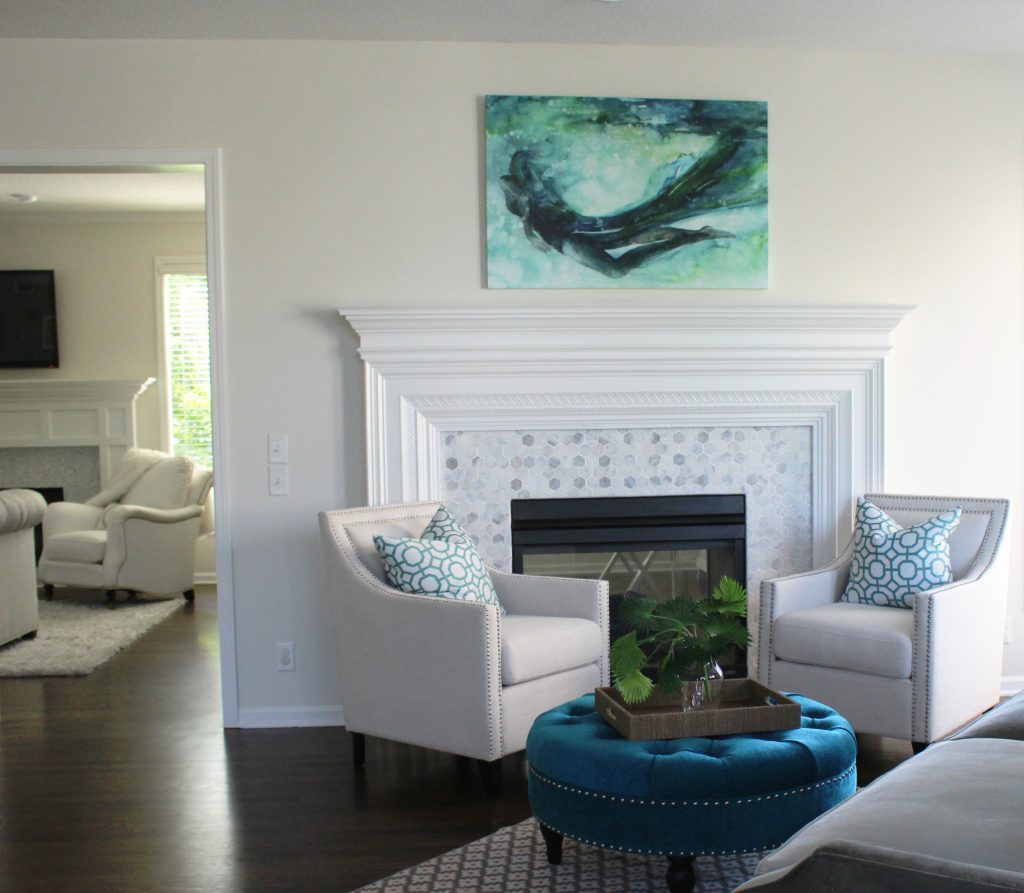
1. Repetition – To coordinate two pieces of mismatched upholstery, unify both pieces by repeating a color from one piece to onto another with a pillow or throw. Here the blue green color of the ottoman was repeated in the pattern on the pillows, while the artwork brings everything together including the gray velvet sofa in the foreground and the new tile on the fireplace.
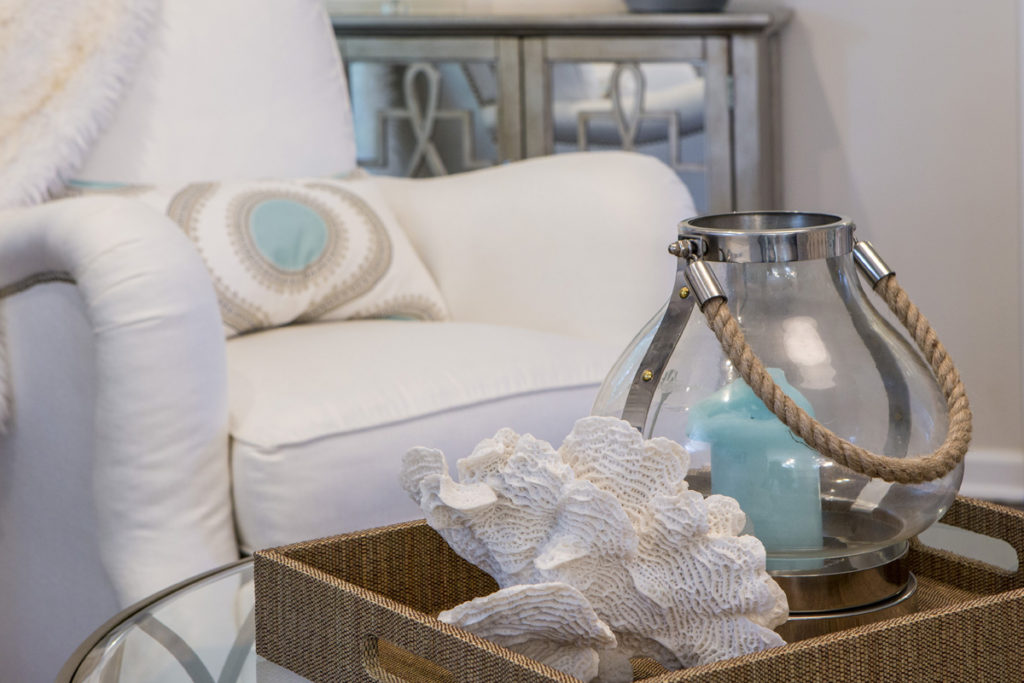
2. Introduce a new design element – A piece of artwork overhead or nearby accessories with both colors can also serve as a way to bring two different colors of upholstery together effectively. Here in this family room the blue center of the pillow is repeated in the blue candle nearby while the white seashell picks up the white upholstery.
When creating vignettes of accessories in your space whether its for a tabletop or shelves, try to place objects of various heights, sizes, texture, and shapes together to create a cohesive whole. Normally placing the taller narrower items at back with shorter wider items at the front works best.
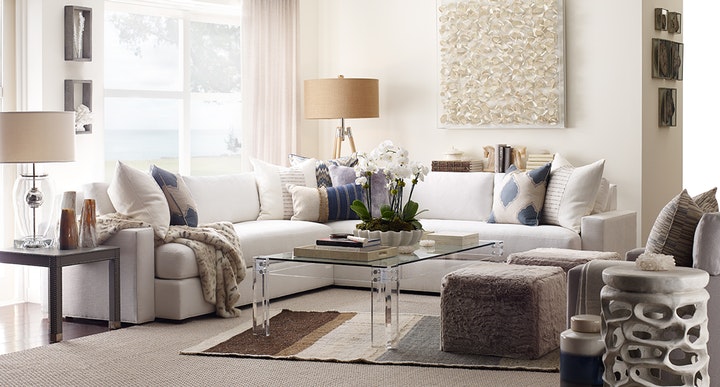
3. Layer a rug underneath – In this living room the striped area rug underneath brings together the white sectional and brown chair plus ottomans to create a cohesive feel.
For more great interior design ideas, sign up for our blog here!
Plus become a fan of Kansas City’s interior designer and former host of the Living Large design show, Karen Mills on Facebook or Instagram here.
